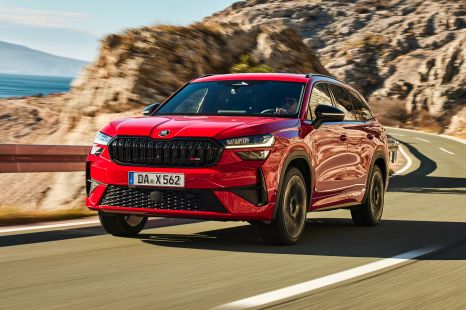

James Wong
2026 Skoda Kodiaq RS: Seven-seat performance SUV priced for Australia
3 Hours Ago
The best of the last naturally-aspirated Lamborghinis. The Huracan STO is a race car for the road that laughs in the face of noise and emissions laws.
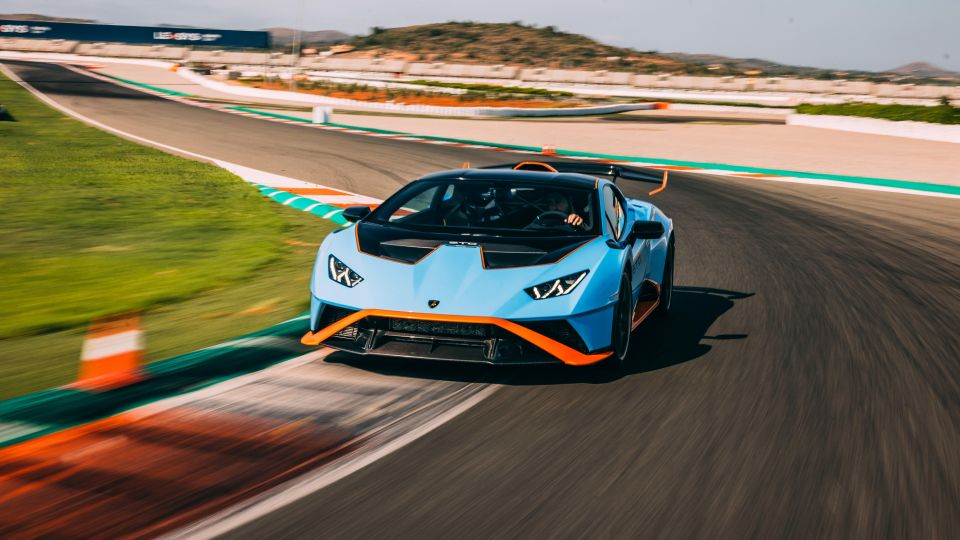


Publisher

Publisher


Publisher

Publisher
Where expert car reviews meet expert car buying – CarExpert gives you trusted advice, personalised service and real savings on your next new car.
Having talked to the head of Lamborghini design, Mitja Borkert, at the recent launch of the Huracan Tecnica, it became pretty obvious that cars like the $596,000 Huracan STO are going to be harder and harder to make in the future.
Something as simple as the driver’s instrument display can no longer sit so low, meaning the dashboard position has to be raised to accomodate markets like Japan.
That’s not to mention exhaust noise, emissions and safety regulations both for internal design but also for pedestrian safety and god knows what else – it’s a minefield.
The reality is, the Lamborghini Huracan and Aventador family leave behind a legacy that will undoubtedly be superseded in terms of power, technology and performance.

But there’s unlikely to ever be a truer expression of Lamborghini’s DNA – loud, obnoxious and carrying a blatant disregard for the societal norms, arguably much like their owners.
Nowhere else in the Huracan family is that more on display than the STO. The race car for the road, the Super Trofeo Omologata, Lamborghini’s ultimate expression of performance in the Huracan family. A naturally-aspirated V10 that doesn’t care about a 12.3 per cent primary vote for the Greens.
While we were at the Circuit Ricardo Tormo in Valencia recently, there were half a dozen STOs sitting around being used as instructor cars, so when no one was watching yours truly decided to casually get in a beautiful Blu Laufey spec and head out on track and hope no one would notice.
Visually, it’s hard not to let your inner child out when you stand near an STO and smile enthusiastically. The Huracan has never looked so ridiculously good.
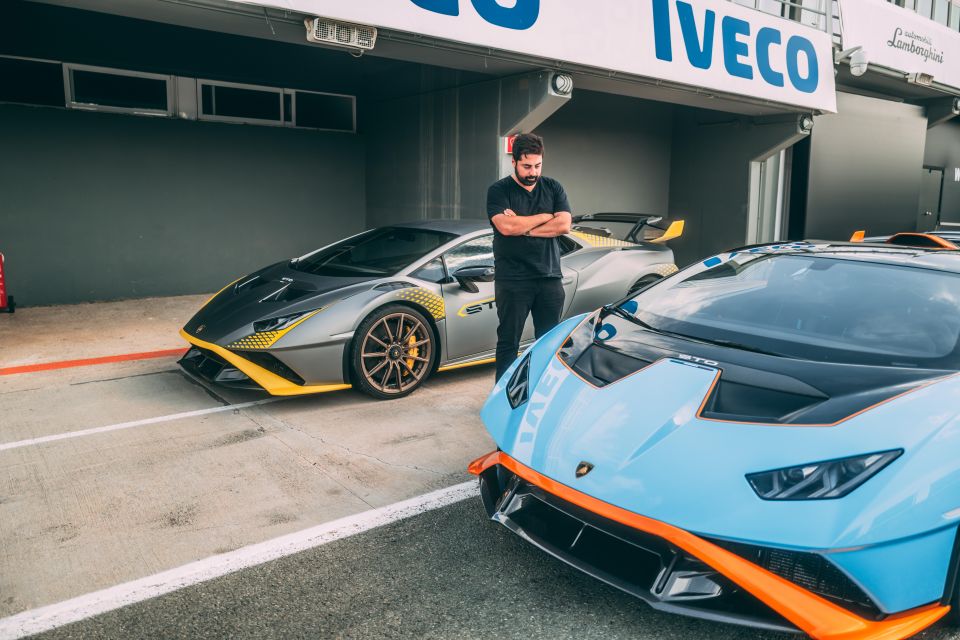
It’s a giant toy, more absurd in every way than even the Aventador SVJ. It’s basically a Super Trofeo race car wearing a suit. Frankly, it’s not even an expensive suit given a lot of the aero parts feel pretty fragile to touch – it’s all about weight saving, with 75 per cent of the body panels using carbon-fibre.
There’s no point – at least in your author’s opinion – to buying an STO in a single colour; go all out and make it look as crazy as it possibly can. More importantly, as the designers intended, get a dual colour scheme that highlights the front ‘moustache’, sides and rear apron with a contrast finish.
This is the sort of supercar that has no concept of subtlety. No matter where it goes, when it goes and how long in the future it goes, it will turn heads.
Comparing an STO to a Tecnica or an EVO is a little nonsensical, as each are built for completely different purposes.
A lot of car companies love to say their supercar is a race car for the road: Ferrari claims that with its special series cars like the Speciale and Pista, and there is some validity to that. But the STO is more in the category of the Porsche 911 GT3 RS in it looks like a race car and it sounds like a race car, because it pretty much is a race car.
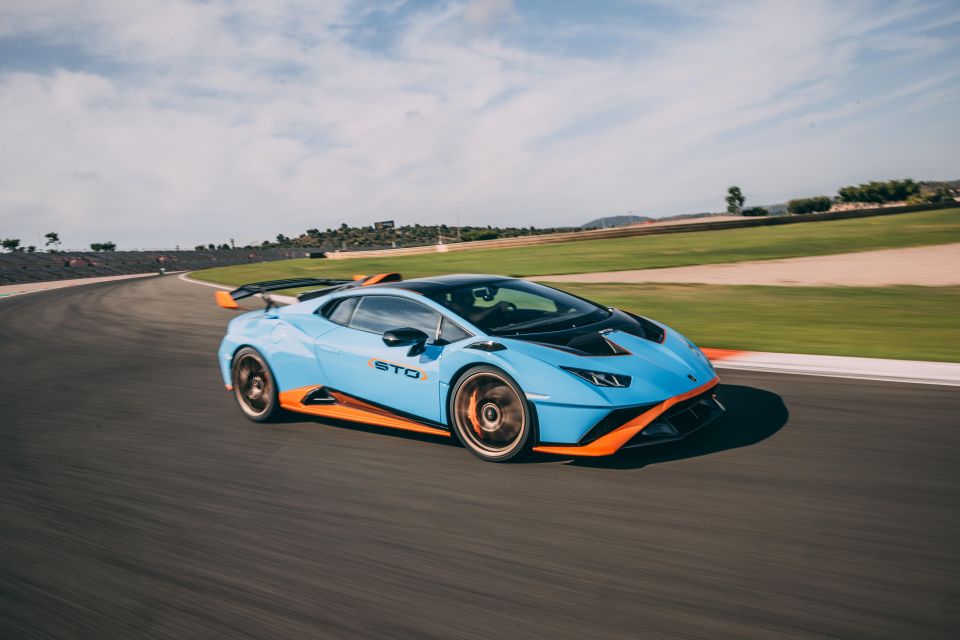
Our out lap at the track was relatively mild, trying to adjust our brake points from the Huracan Tecnica drive. It’s a completely different Brembo carbon-ceramic brake feel, and for the road we’d probably say it’s not ideal if you intend to drive this as a weekend cruiser through the nightlife district.
On track though, you can basically brake before you think you’re going to die and then realise you still have a few more metres
The interesting thing about the Huracan STO is that it likes to be driven on the edge and on the edge only. It reacts best when you’re at your limit and taking the STO along for the ride.
Realistically, the average driver’s limit is nowhere near that of the STO, but to give you an idea our lap time in the STO after just five laps was 4.8 seconds quicker than the Tecnica around Ricardo Tormo.
This might seems surprising, given the STO and Tecnica both have the same 5.2-litre naturally-aspirated V10 making 470kW (8000rpm) and 565Nm (6500rpm), all sent to the rear wheels via the same seven-speed dual-clutch transmission.
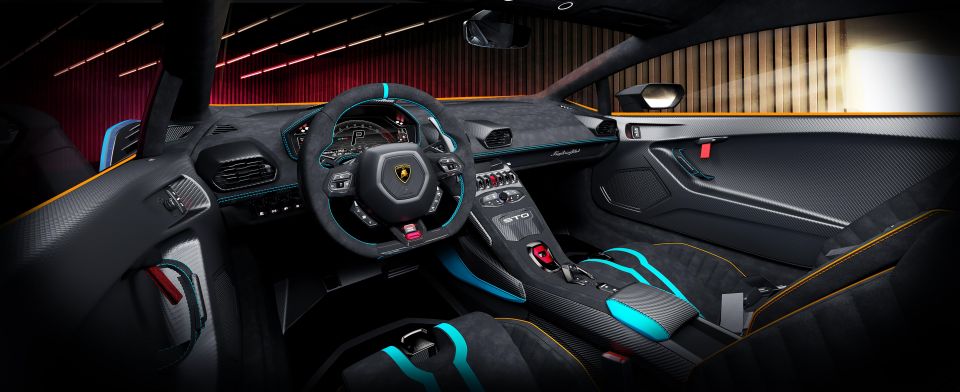
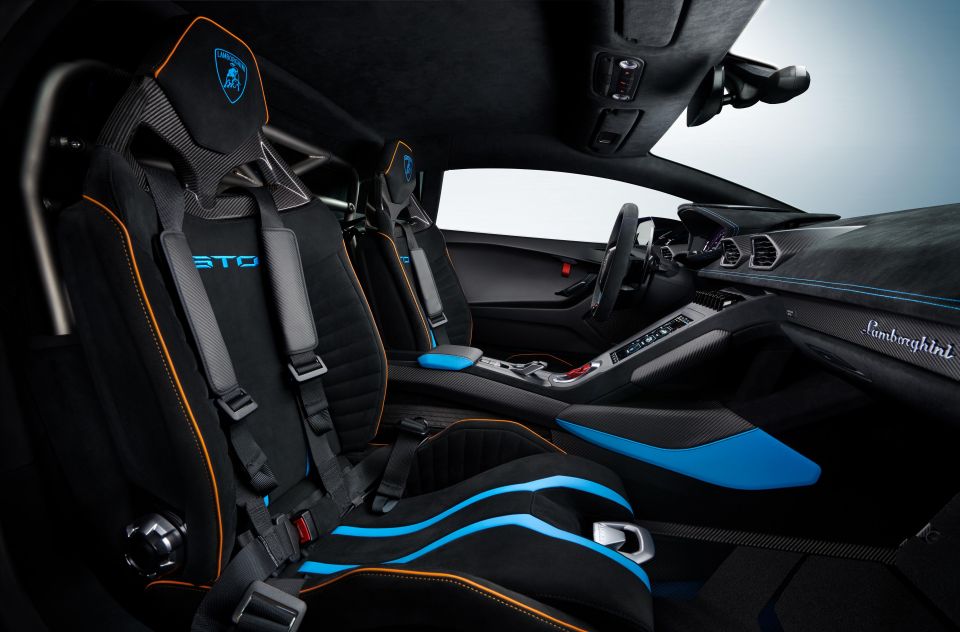
Yes, there is a 46kg weight difference thanks to the extreme use of carbon-fibre everywhere, but that alone doesn’t account for the large performance differential.
Ignoring the technical details for a second, the main difference in the performance is confidence and feel. The STO is so incredibly planted and assured at high speed and the steering is so responsive that you can keep pushing and pushing.
Despite being real-wheel drive, getting on the accelerator early in the corner as you start to unwind the steering seems to be a very natural process, and although there is definitely that feeling that this will bite your head off if you get it wrong, the point at which you get it wrong feels another planet away compared to its road-going siblings. It’s an easy car to slide as well.
The standard Bridgestone Potenza tyres are excellent, but we feel a set of Michelin Cup 2s, Cup2 Rs or even Pirelli’s famed Trofeo Rs would increase the gap with the more road-focused versions even more. It’s surprising Lamborghini persist with Potenza race tyres.
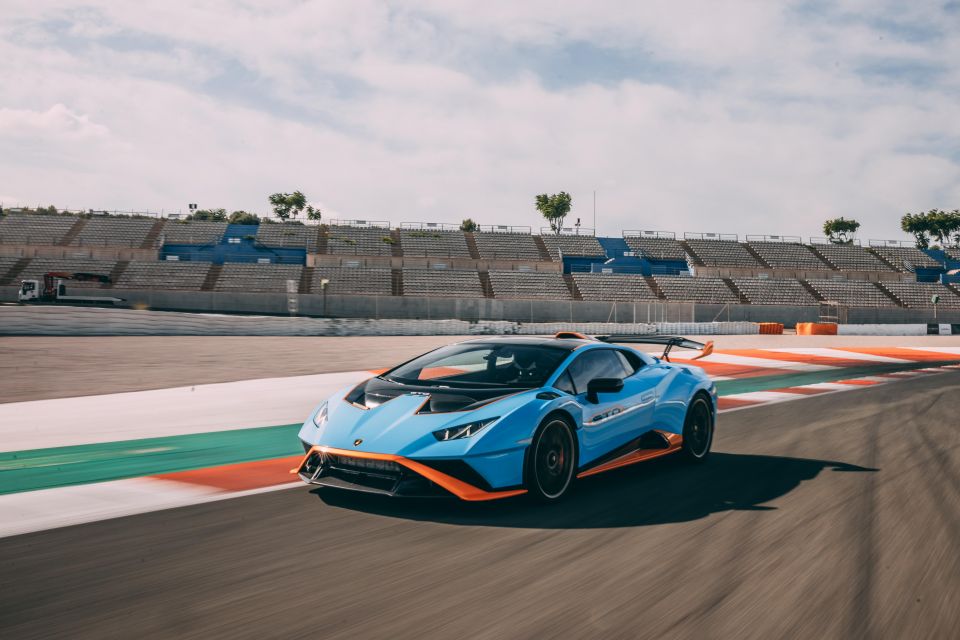
Turn one at Cirado Tormo is as close to flat in the STO as any high-speed turn could be, which is significantly helped in terms of seat-of-your pants confidence by the 450kg of downforce (53 per cent more than the Performante and 37 per cent more aerodynamically efficient in general) and every corner builds upon that confidence as you go.
That brings an interesting topic worth discussing: STO v Performante. As an owner of the latter, I can tell you the two cars are very, very different.
While the Performante set Nurburgring lap records (6:52 minutes) a few years ago, the STO did head out to the ‘Ring last year but no times were ever officially released, which is a little peculiar and unusual.
Although one is RWD and the other is AWD, the official 0-100km/h time is only faster by 100ms in favour of the Performante (2.9s v 3.0s) thanks to better grip off the line.
Steering feel, however, feels worlds apart in favour of the STO. The front axle turns with noticeably better grip, feel and feedback, and the way it steps out feels more manageable. There are also no AWD crabbing issues on full lock, while the brakes are also superior to stand on and behave more like a race car for trail braking.
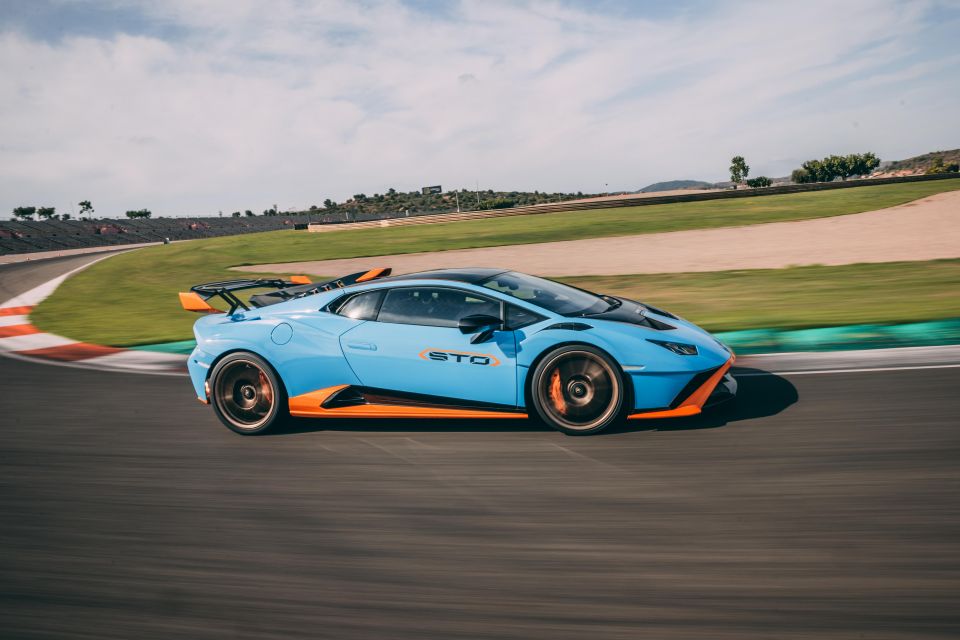
The biggest difference is that the STO is a lot easier to lean on in the fast and medium corners, while the Performante is better suited to slower corners where getting on the accelerator earlier yields a better result thanks to the front axle pulling the car out.
Lamborghini’s helpful instructors had a very interesting take on the two cars; they believed the average person would be quicker in the STO than a Performante because of its level of confidence and downforce at high-speed, though the difference would be negligible when you put a Pro driver in charge.
Not sure we’d agree with that, but then again I’m not a pro racing driving. According to the head instructor, the STO was 0.4 seconds faster than the Performante around Ricardo Tormo.
The biggest downfall of the STO isn’t the car or experience itself, but rather our archaic regulations. Unlike the rest of the civilised world (except Canada, we believe), the race seats used in the STO (pictured above) have an airbag that isn’t big enough for our safety rules, so they have to be removed in favour of comfort seats – which Lamborghini Australia now calls Sport seats – by default.
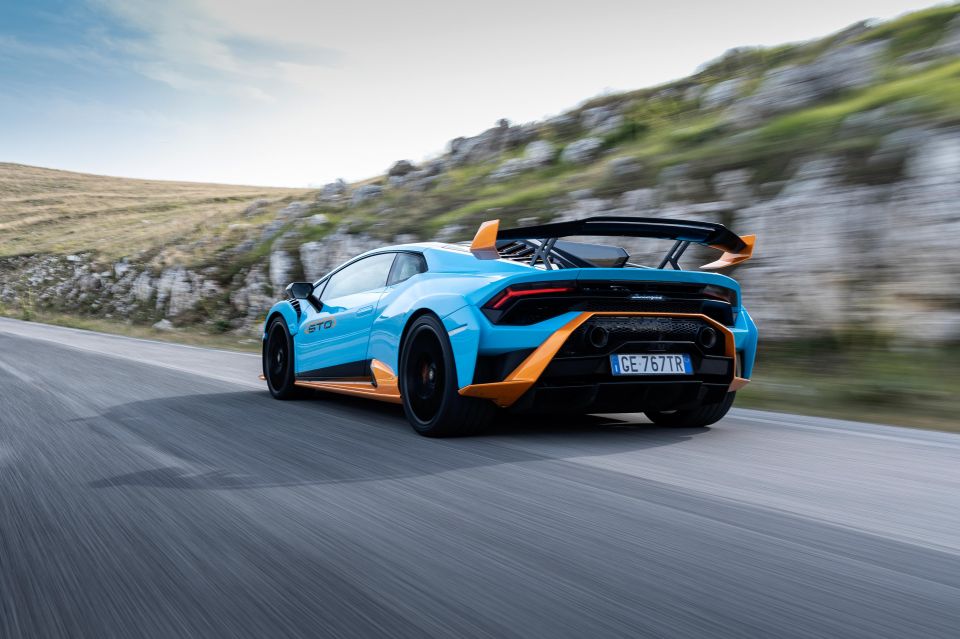
Essentially, you go from having some of the nicest carbon-fibre racing buckets money can buy, to a super comfortable seat made for road driving – great if you’re getting an EVO, but not ideal for an STO.
For us, it simply means you have to budget for replacing your factory seats with something more suited to track use, otherwise you have a purpose-built race car without the things that hold you in place for its intended purpose.
Overall, it’s hard not to get excited about the Huracan STO. If you have owned a road-going Huracan before and want something more circuit-oriented, there’s nothing better out there. If you’re coming into the brand for the first time; the noise, feel and wow-factor won’t disappoint.
Perhaps the only real criticism we can stick on the STO, outside of its localised seat issue, is that the chassis is so good it can handle a reasonable jump in power and torque. But, it’s also the absolute last special Huracan iteration with an engine that has proven itself to be just about bulletproof, so why risk it now.

Click the images for the full gallery
MORE: 2023 Lamborghini Huracan Tecnica review MORE: Everything Lamborghini Huracan
Where expert car reviews meet expert car buying – CarExpert gives you trusted advice, personalised service and real savings on your next new car.
Alborz Fallah is a CarExpert co-founder and industry leader shaping digital automotive media with a unique mix of tech and car expertise.


James Wong
3 Hours Ago
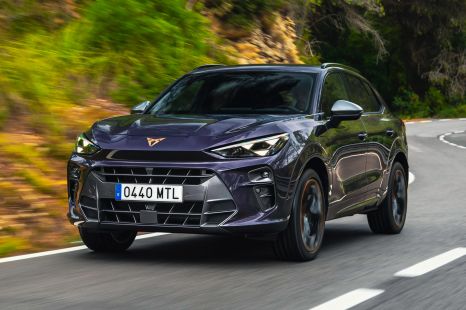

James Wong
3 Hours Ago


CarExpert.com.au
5 Hours Ago


Damion Smy
5 Hours Ago
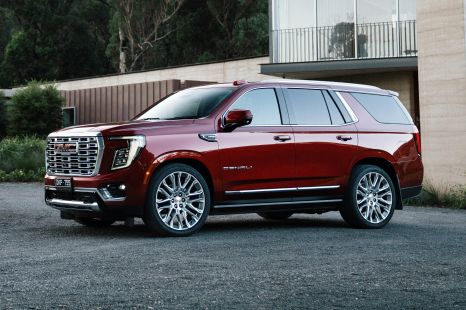

Alborz Fallah
5 Hours Ago
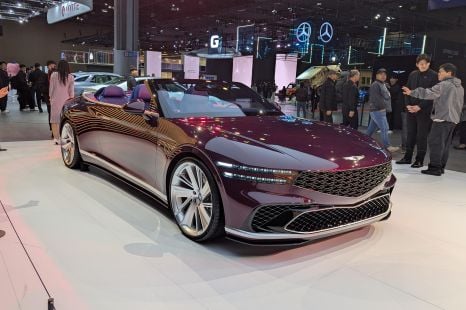

William Stopford
6 Hours Ago